Taste the essence of a food-obsessed city where tradition and innovation collide.
Seoul, South Korea
OUL at Four Seasons Hotel Seoul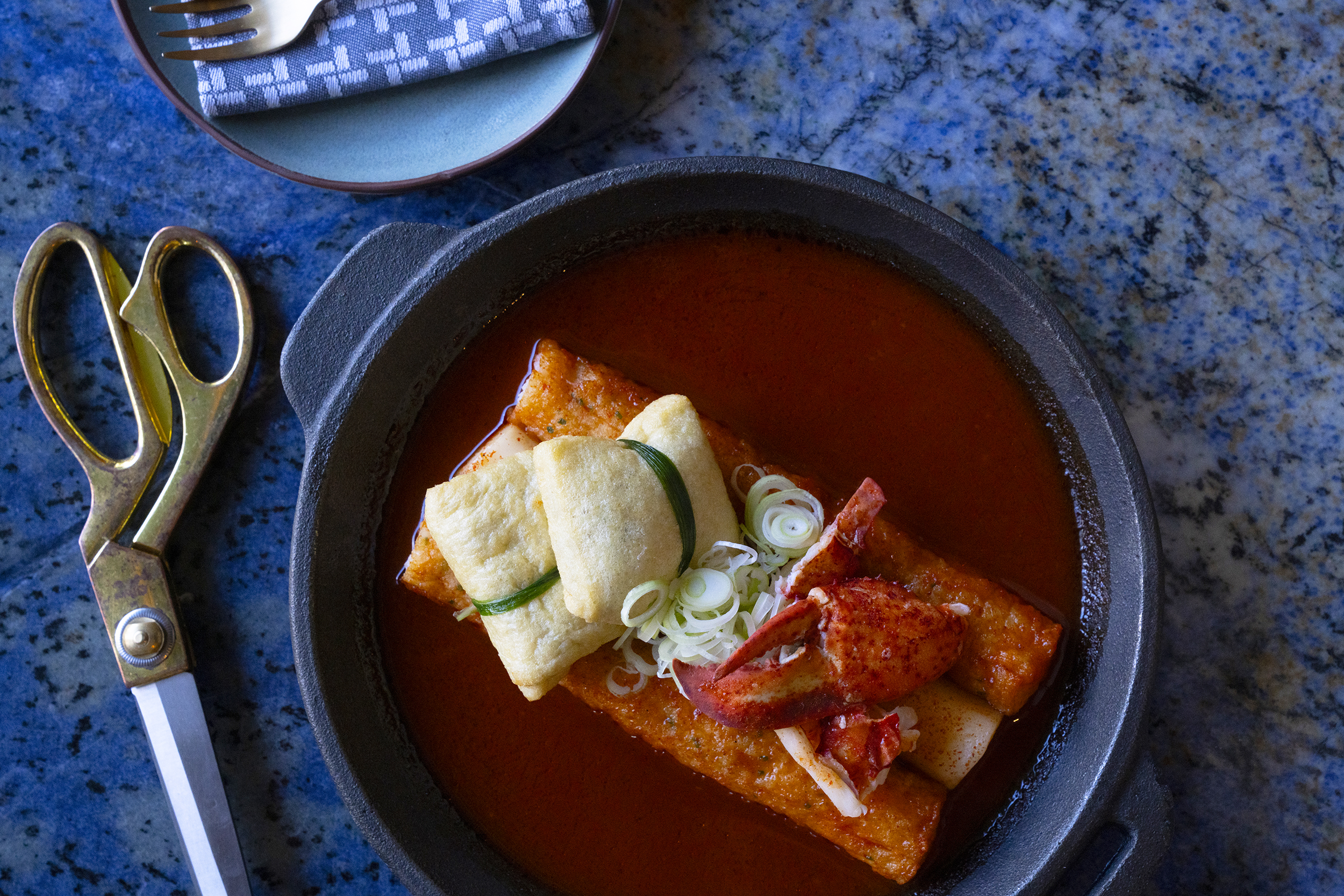
Koreans have always understood that flavor requires patience. The culture teaches that well-worn earthenware vessels, for example, deepen the complexity of essential sauces. Kimchi performs underground alchemy for months on end. And rice wine makgeolli takes its sweet time before bubbling with exuberance. Out of such millennia-old traditions - and the country's most demanding palates - emerges Seoul's restaurant scene. The city's gastronomy is both a microcosm of Korea's slow-food traditions and a fast-moving laboratory in which internationally trained chefs openly experiment. Seoul's time has come, and the wait was worth it.
Here's how to dine and drink like a local in South Korea's capital, from its Michelin-starred temples to its must-visit street tents.
Refined service at La Yeon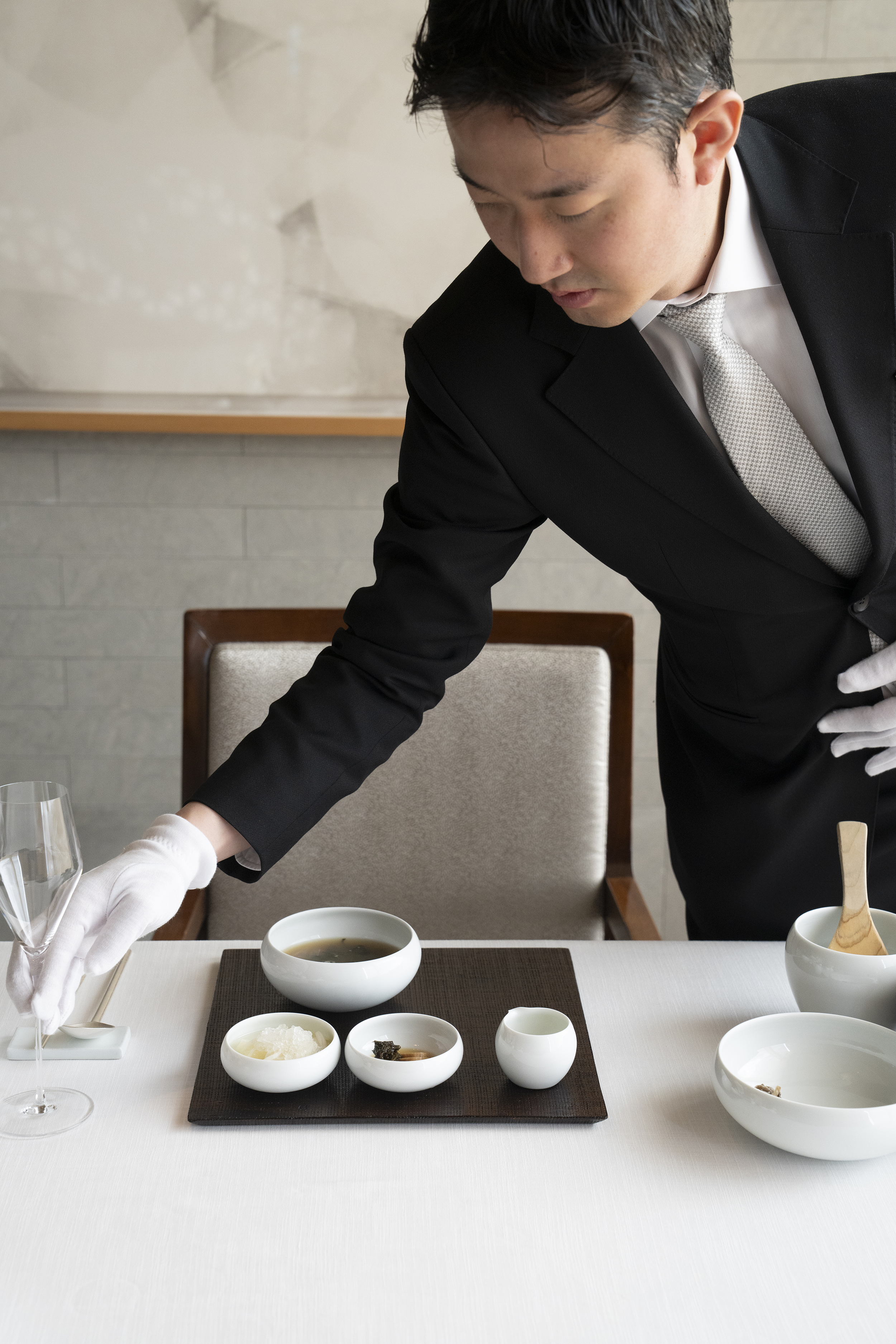
THE FANCY TABLES
Globally informed yet seasonally anchored, Seoul's fine-dining scene channels a restless curiosity about once-forgotten local ingredients into tomorrow's possibilities. Among the city's most sought-after tables right now is Onjium (@onjium_restaurant), which overlooks Gyeongbokgung Palace, with a kitchen that translates old royal recipes into modern creations - like pike eel grilled with finely minced beef - for no more than about 25 diners a night. Good luck. It might be slightly easier to get a table at the 40-seat, ultra-serene La Yeon (shilla.net/seoul), which sits atop The Shilla hotel with expansive views of the city; inside, chef Kim Sung-il speaks to the same tradition but with a different accent, serving 11- to 15-course tasting menus. Be on the look out for crispy grilled red mullet.
Netflix's hit show Culinary Class Wars made chef Anh Sung-jae a global celebrity, but when the show aired, his famous restaurant, Mosu (mosuseoul.com), which held three Michelin stars, had just closed. He reopened it this year - 60 seats, tasting menu only - and all of Seoul is abuzz about his acorn noodles with black truffles, abalone tacos and sea-urchin-filled matcha tofu.
One of the toughest restaurants to get into - a mere 15-seat dining counter - is Soigne (soignerestaurantgroup.com), which tells stories through seasonal "episodes," for which Per Se-trained chef Jun Lee structures menus with a beginning, climax and resolution. The signature Seorae escargot is a whole narrative arc in one bite, bringing together native snails and roasted spinach atop a truffled egg custard.
And at the 25-seat seafood-and-plant-based Mingles (restaurant-mingles.com), the only restaurant in Seoul to currently display Michelin's three-star plaque, chef Mingoo Kang puts his Nobu pedigree and fermentation training with Buddhist nun Jeong Kwan to good use, most notably with a dessert of three foundational jang (Korea's fermented sauces): doenjang (bean paste) creme brulee, soy-sauce-marinated pecans and red-pepper-paste pastry.
A round of cocktails at the Four Seasons Hotel Seoul's Charles H. bar.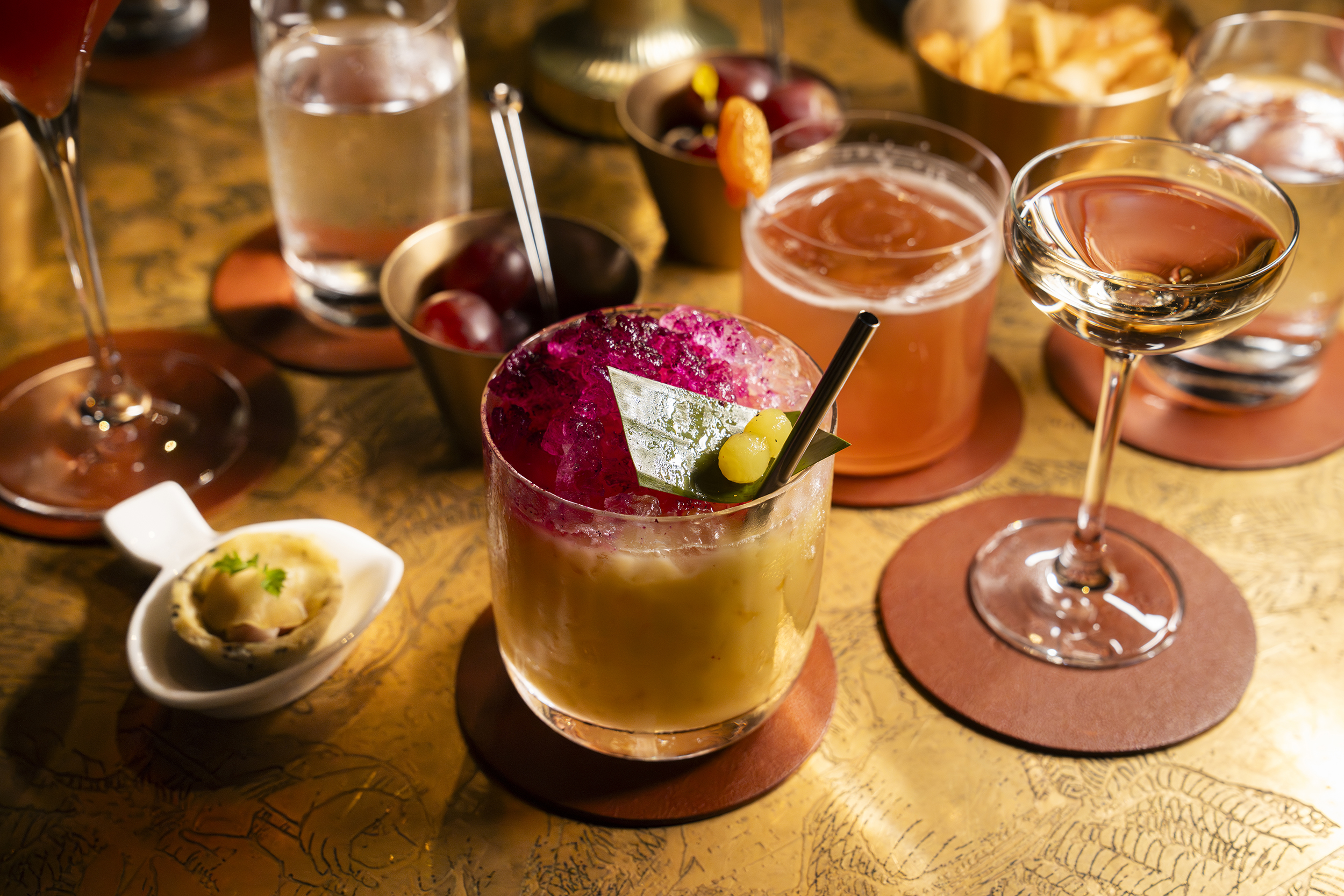
AN ULTRA-LUXE COCKTAIL SCENE
Charles H. at the Four Seasons Hotel Seoul has been leading the charge in the city's chichi cocktail scene for years. More recently, the hotel debuted another luxe bar, OUL (fourseasons.com/seoul), which is focused exclusively on Korean spirits in heritage drinks, such as garlic-butter vodka mules with candied ginseng, paired with snacks inspired by local street foods. The bar's seasonal terrace extension on the 15th floor stays open through the end of October.
Even more cutting edge, the speakeasy-like Pine & Co (pineandcoseoul.co.kr) serves molecular creations like tequila-corn-milk cocktails topped with ants. And inside a glass-courtyard house that's tucked into a shoulder-width alley, Gong Gan (@gong_gan_anguk) shakes up a mean gin drink made with mouth-puckering omija berries. If you're someone who finds it hard to decide what to drink, head to the no-menu Cobbler (facebook.com/BarCobbler) and share a favorite flavor profile with your bartender, who will create on-the-spot bespoke drinks based on any desire.
At Zest (@zest.seoul), a zero-waste philosophy transforms citrus peels into house-distilled gin, which becomes a hallabong-and-carrot Garibaldi that captures Korean terroir in liquid form. Behind its secret door inside a flower shop, Alice Cheongdam (@alice_cheongdam) stages theatrical performances, for which cocktails arrive in elephant-shaped glasses or smoke-filled wooden boxes. Meanwhile, the reservations-only Bar Cham (@bar.cham), inside a traditional hanok, serves a here-today, gone-tomorrow menu that has included wasabi shrub with Tokki soju and sesame oil, served in a slim glass shaped humorously like gimbap, a childhood picnic staple.
A staff meal before service at Mr. Ahn’s Craft Makgeolli. Mr. Ahns Craft Makgeoulli in Seoul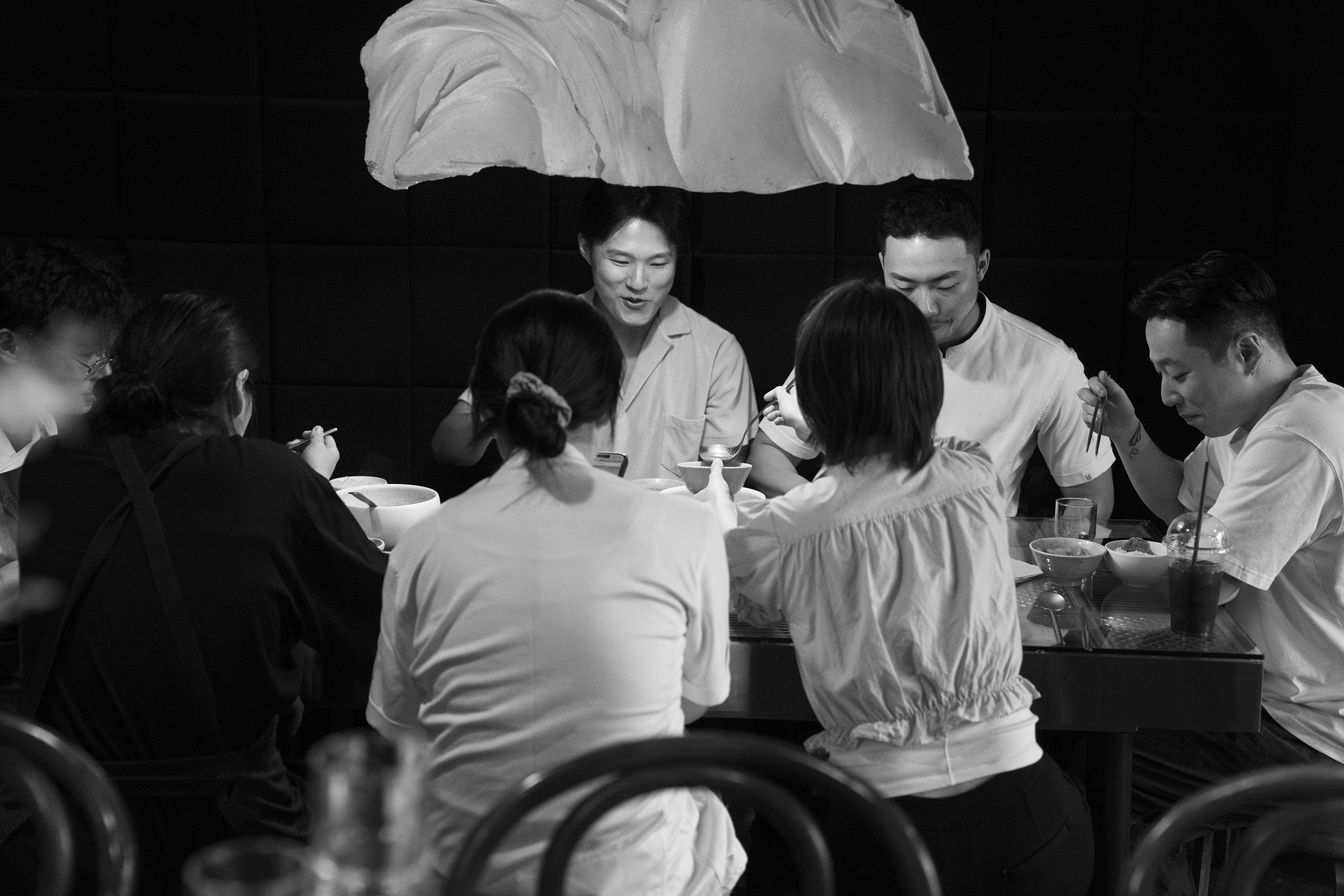
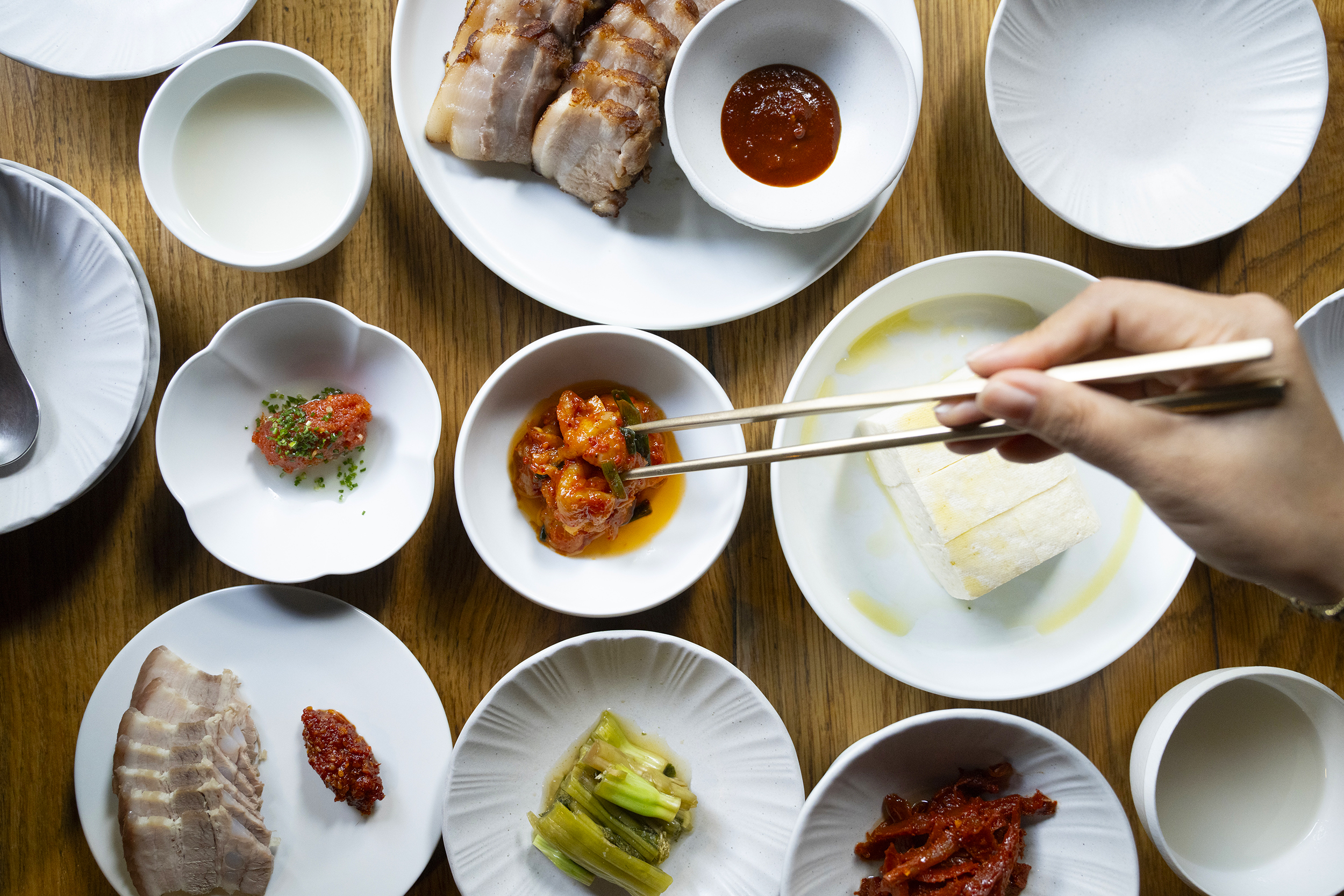
THE K-PUB LIFE
Let's keep it real: Koreans rarely drink without eating (and vice versa), and the tradition of anju - literally, "food that goes with alcohol" - lives on strong at sidewalk bars and celebrated upscale gastropubs alike. Good times. Among the latter, at casually chic Mr. Ahn's Craft Makgeolli (@ahn.mak), the milky namesake rice wine gets paired with elevated drinking food like marinated-tuna-belly sashimi and abalone with yuzu yogurt. At the speakeasy Doju (@doju_official), soju flows freely, paired with savory jeon pancakes and beef ribs. And at intimate Sanho (@sanho_sinsa), pub favorites like beef patties and raw shrimp and steamed clams accompany craft beers and premium oak-aged soju.
A pork platter at Pyeongando Jokbaljip.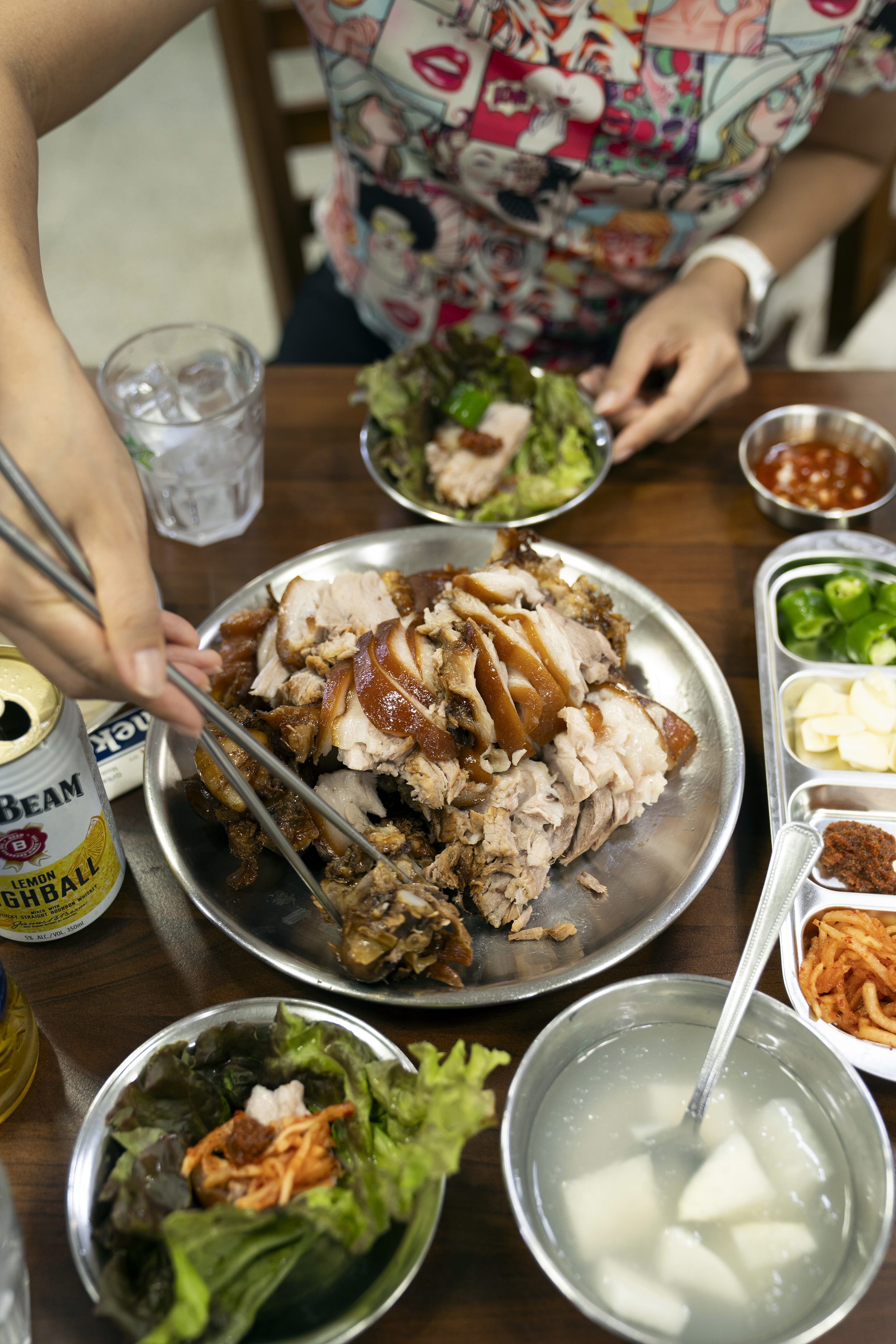
STREET SMARTS
For the ultimate anju nights, head to Jongno 3-ga and Euljiro 3-ga - two streets next to Exit 3 of the Jongno 3-ga subway station - a festive enclave where tattoo-sleeved Gen Zers drink well past dawn alongside middle-aged salarymen inside stalls and pocha (short for pojangmacha, the beloved pop-up bars tucked under plastic tarps on sidewalks). Here ice-cold soju flows freely alongside spicy, salty and savory street food. Pyeongando Jokbaljip is famous for its rich, glossy pig's trotters and punchy, gochujang-laced fare. If you manage to locate a spot named Haeundae, order crackling, deep-fried shrimp. Or at Yeongsimi Pojangmacha, the chilled octopus with vinegary spicy sauce. Simply follow the raucous crowd, and when you spot something you like, find a stool.
A professionally tended grill at Kukbingwan.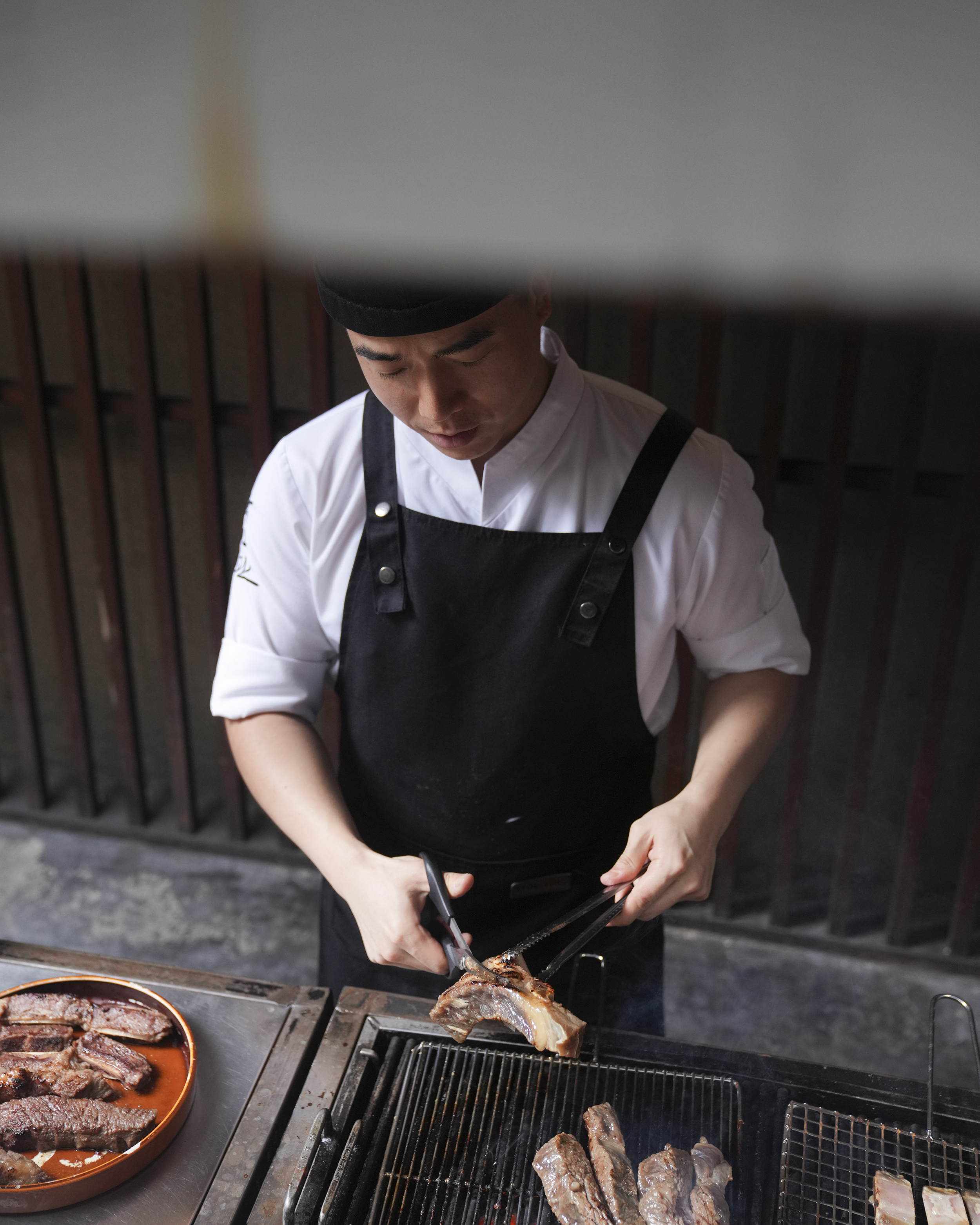
AND BARBEQUE, OF COURSE
A visit to Seoul would not be complete without K-BBQ, and at a seemingly infinite number of grill restaurants, the formula is constant: raw prime beef or pork belly grilled over blazing coals, often wrapped in fresh leaves, with garlicky ssamjang. The team behind Michelin-starred Mingles has also opened the city's poshest grill, Born & Bred (bandb.co.kr), which boasts diamond-cut beef and dramatic presentations, including an omakase option at a new chef's counter. Age-old institution Samwon Garden (dinehill.co.kr/samwon-garden), with its iconic landscaped waterfall, has hosted state dinners, and Gombawie (@gombawie) features vintage oil-barrel grills. The nose-to-tail Byeokje Galbi (thebyeokje.com) buys premium beef at auction and obsesses over its signature "snowflake" marbling. And, tucked into an atmospheric alleyway jam-packed with restaurants favored almost entirely by locals, the crowd favorite Kukbingwan (@kukbingwan_official) provides a tranquil atmosphere wrapped around a bonsai courtyard inside a beautifully restored hanok.
Women wearing traditional hanbok at Gyeongbokgung Palace.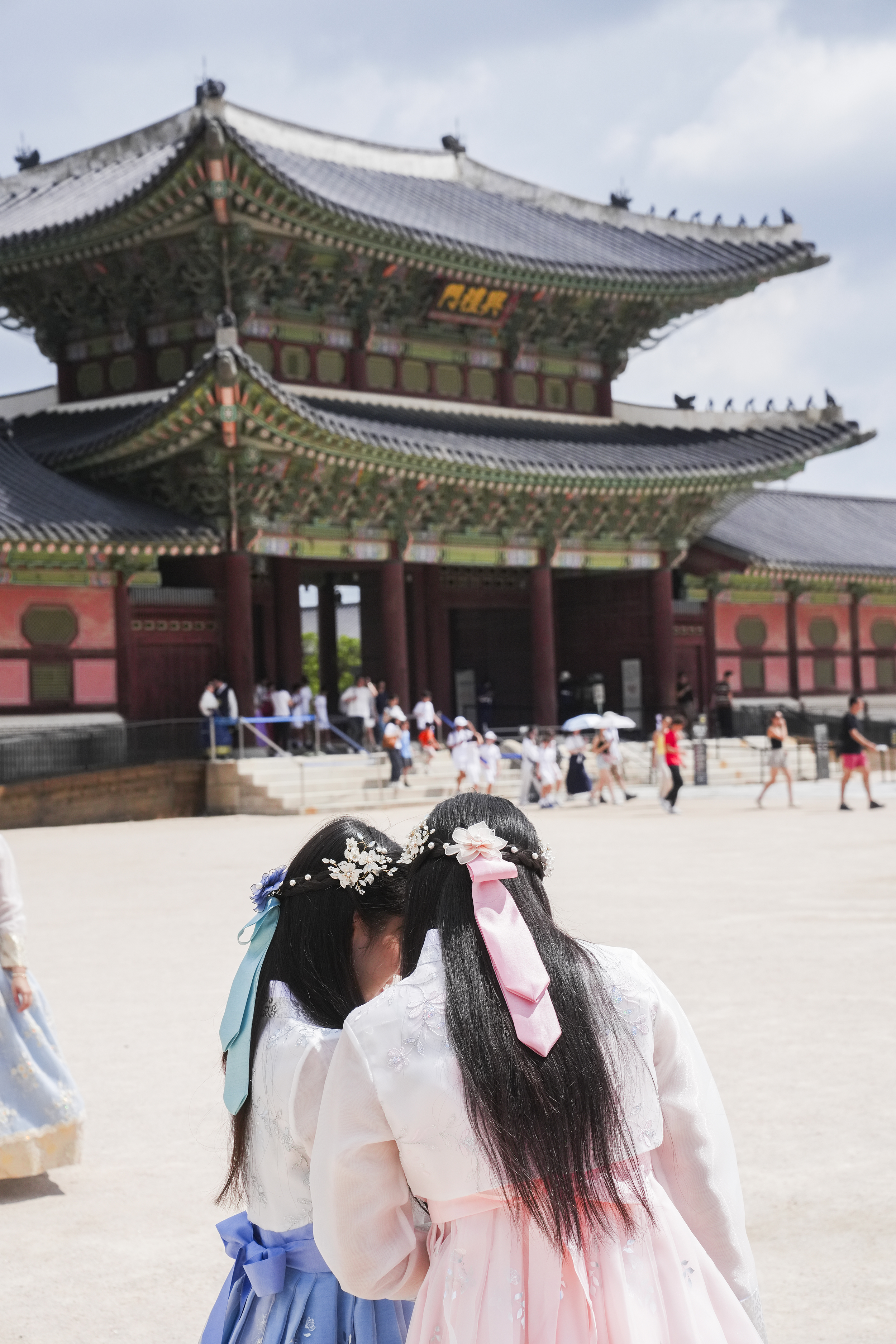
ONE MORE THING: ROYAL COURT CUISINE
It's most common for celebrations and family gatherings, but also worth considering for visitors seeking authentic culture. Descendants of the cooks who once served kings continue to preserve the traditional gastronomy in royal banquet settings. Inside the 500-year-old former residence of a prince, Philkyungjae (philkyungjae.co.kr) serves signature marinated short-rib patties, kimchi-octopus consomme and seasonal mountain vegetables. And while the confines are much newer, Jihwaja (jihwajafood.co.kr) is considered Korea's first royal cuisine restaurant, known for its colorful, nine-sectioned wooden vegetable trays. At the secret-garden-like Seokparang (seokparang.co.kr), the surasang, or royal table, features standout dishes like cod dumplings and seven-herb chicken. And, for a contemporary interpretation, Doore (mmca.go.kr) offers artfully plated but traditionally flavored multicourse meals inside the National Museum of Modern and Contemporary Art.